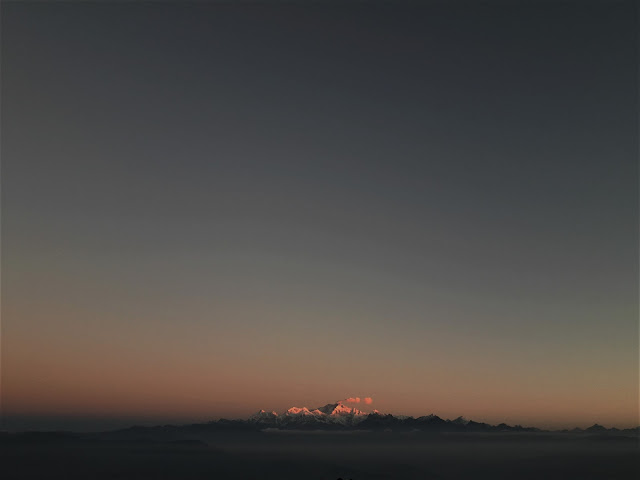Wandering in the Vibrant City... Kolkata... Day 3 Part 4
Day 3 Part 4

Our next stop was at The Sudhanyakhali Watch Tower. We could see only two wild boars sniffing with their snouts pointed in search of food and a striped duck family swimming sedately in a pond at a distance…

Here is a wire covered bridge that goes up to 15 -20 ft in height from the ground. People walk in it and the animals are free to roam around. What I noticed was outside this caged walkway made out of chain links is a barrier of strong rope net. It prevents the big cats from hurting itself if ever it tries to hurl itself on the walkway.
By then, our lunch was ready. It was rice with mixed vegetable curry, Bengali vegetable fry, papad, fritters, dahi and roshgullas...
Thereafter the cruise took us through the rivers and narrow creeks.
We found trees rooted in waters, trees standing above the water with their roots in intricate designs holding on to the soil and also the saline watermarks on trees which submerge at high tides.
On the banks we could see small sprouts all over, pencil like roots that stick up out of the dense, wet ground like snorkels. These breathing tubes, called pneumatophores, allow mangroves to cope with daily flooding by the tides. Pneumatophores take in oxygen from the air unless they're clogged or submerged for too long.
The interesting fact of these unconventional roots are they multitask... Root systems that arch high over the water are a distinctive feature of the mangrove trees. These aerial roots take several forms. Some are stilt roots that branch and loop off the trunk and lower branches. Others are wide, wavy plank roots that extend away from the trunk. Aerial roots broaden the base of the tree and, like flying buttresses on medieval cathedrals, stabilize the shallow root system in the soft, loose soil. In addition to providing structural support, aerial roots provide oxygen for respiration. Oxygen enters a mangrove through lenticels, thousands of cell-sized breathing pores in the bark and roots. Lenticels close tightly during high tide, thus preventing mangroves from drowning...
While cruising along we were able to sight a spotted deer in the shade of a tree munching on leaves, an egret atop a tree and a monitor lizard lazing on the mud flat in addition to numerous jelly fish floating around with no care.
 When we set off on this trip we knew we may not sight any animals as they are in their natural habitat… Even though we went to the watering point, we were armed with the knowledge... those are not the only watering points available to the fauna. But the sight before us of the luscious forest and the waters of Sunderbans itself was worth the trouble…
When we set off on this trip we knew we may not sight any animals as they are in their natural habitat… Even though we went to the watering point, we were armed with the knowledge... those are not the only watering points available to the fauna. But the sight before us of the luscious forest and the waters of Sunderbans itself was worth the trouble…
To me, it was an absolute ‘Paise wasool’ trip with interest… It was calm, soothing and relaxing… Sort of commune with the Mother Nature…
The soft rhythmic hum of the engine in the heat of the noon with the shimmering water reflecting the golden rays and with the breeze blowing on the face lulled us into the arms of the Morpheus… A siesta where you never realized that you took forty winks… Believe it or not! It was also one of the wonderful rejuvenating experience of this trip… We woke up to see the confluence of five rivers... a beautiful sight…
~~~ oOo ~~~
From then on it it was the play of the sunset... As we had traveled to the east of Kolkata, while we were returning we were in for a long view of the setting sun.. Here are some of the shots taken from the moving vehicle... I am presenting it in the sequence shot...
This sequence was shot in a span of an hour and a quarter...
By the time we reached Kolkata it was 8 p.m. Grabbing a quick bite we hit the sack...































Comments
Post a Comment